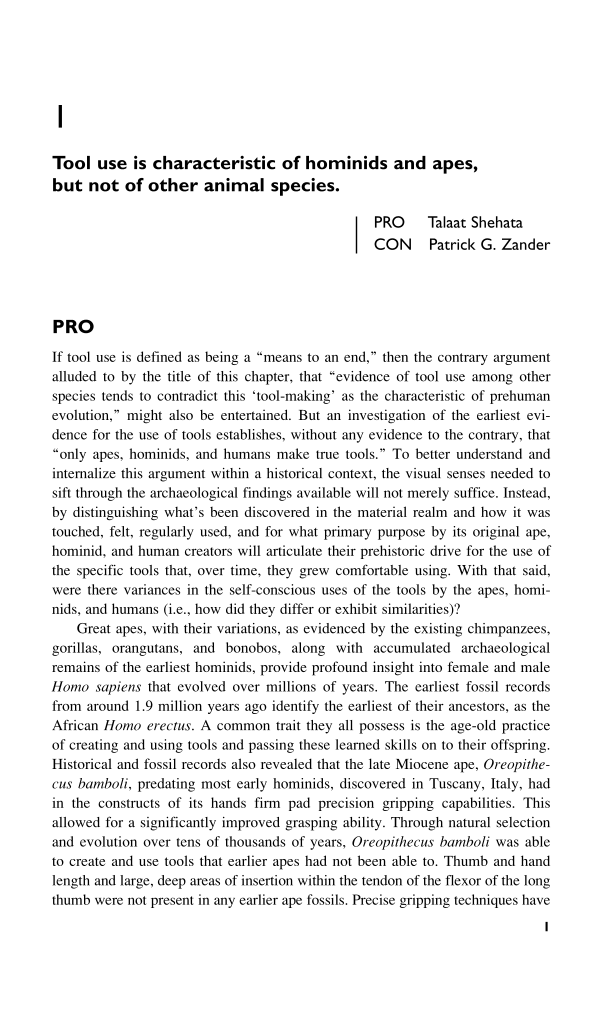1 Tool use is characteristic of hominids and apes, but not of other animal species. PRO Talaat Shehata CON Patrick G. Zander PRO If tool use is defined as being a ‘‘means to an end,’’ then the contrary argument alluded to by the title of this chapter, that ‘‘evidence of tool use among other species tends to contradict this ‘tool-making’ as the characteristic of prehuman evolution,’’ might also be entertained. But an investigation of the earliest evi- dence for the use of tools establishes, without any evidence to the contrary, that ‘‘only apes, hominids, and humans make true tools.’’ To better understand and internalize this argument within a historical context, the visual senses needed to sift through the archaeological findings available will not merely suffice. Instead, by distinguishing what’s been discovered in the material realm and how it was touched, felt, regularly used, and for what primary purpose by its original ape, hominid, and human creators will articulate their prehistoric drive for the use of the specific tools that, over time, they grew comfortable using. With that said, were there variances in the self-conscious uses of the tools by the apes, homi- nids, and humans (i.e., how did they differ or exhibit similarities)? Great apes, with their variations, as evidenced by the existing chimpanzees, gorillas, orangutans, and bonobos, along with accumulated archaeological remains of the earliest hominids, provide profound insight into female and male Homo sapiens that evolved over millions of years. The earliest fossil records from around 1.9 million years ago identify the earliest of their ancestors, as the African Homo erectus. A common trait they all possess is the age-old practice of creating and using tools and passing these learned skills on to their offspring. Historical and fossil records also revealed that the late Miocene ape, Oreopithe- cus bamboli, predating most early hominids, discovered in Tuscany, Italy, had in the constructs of its hands firm pad precision gripping capabilities. This allowed for a significantly improved grasping ability. Through natural selection and evolution over tens of thousands of years, Oreopithecus bamboli was able to create and use tools that earlier apes had not been able to. Thumb and hand length and large, deep areas of insertion within the tendon of the flexor of the long thumb were not present in any earlier ape fossils. Precise gripping techniques have 1
Document Details My Account Print multiple pages
Print
You have printed 0 times in the last 24 hours.
Your print count will reset on at .
You may print 0 more time(s) before then.
You may print a maximum of 0 pages at a time.












































































































































































































































































































































































































































































































































































































































































































































































































































































































































































































































































































































































































































































































































































































































































































































































